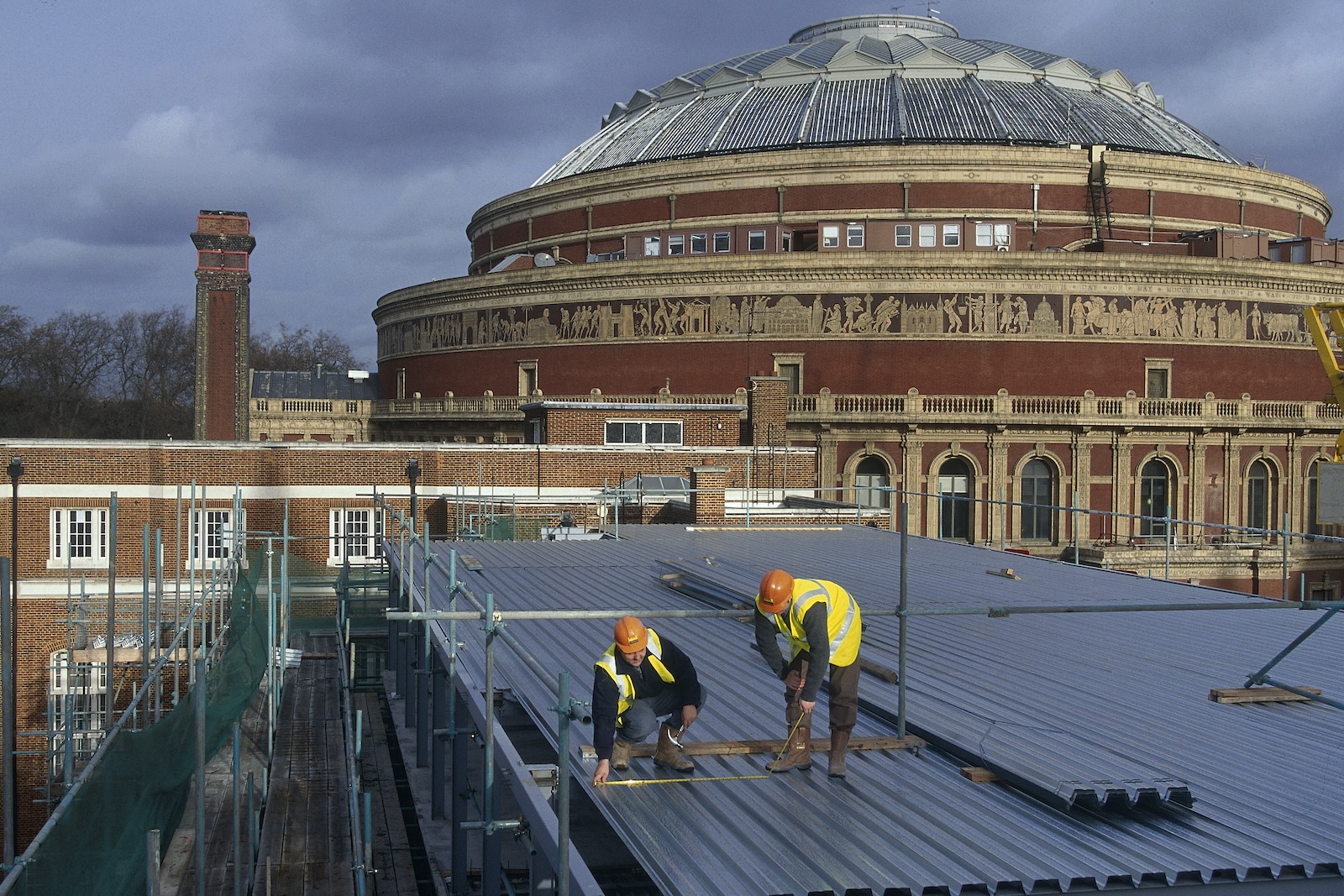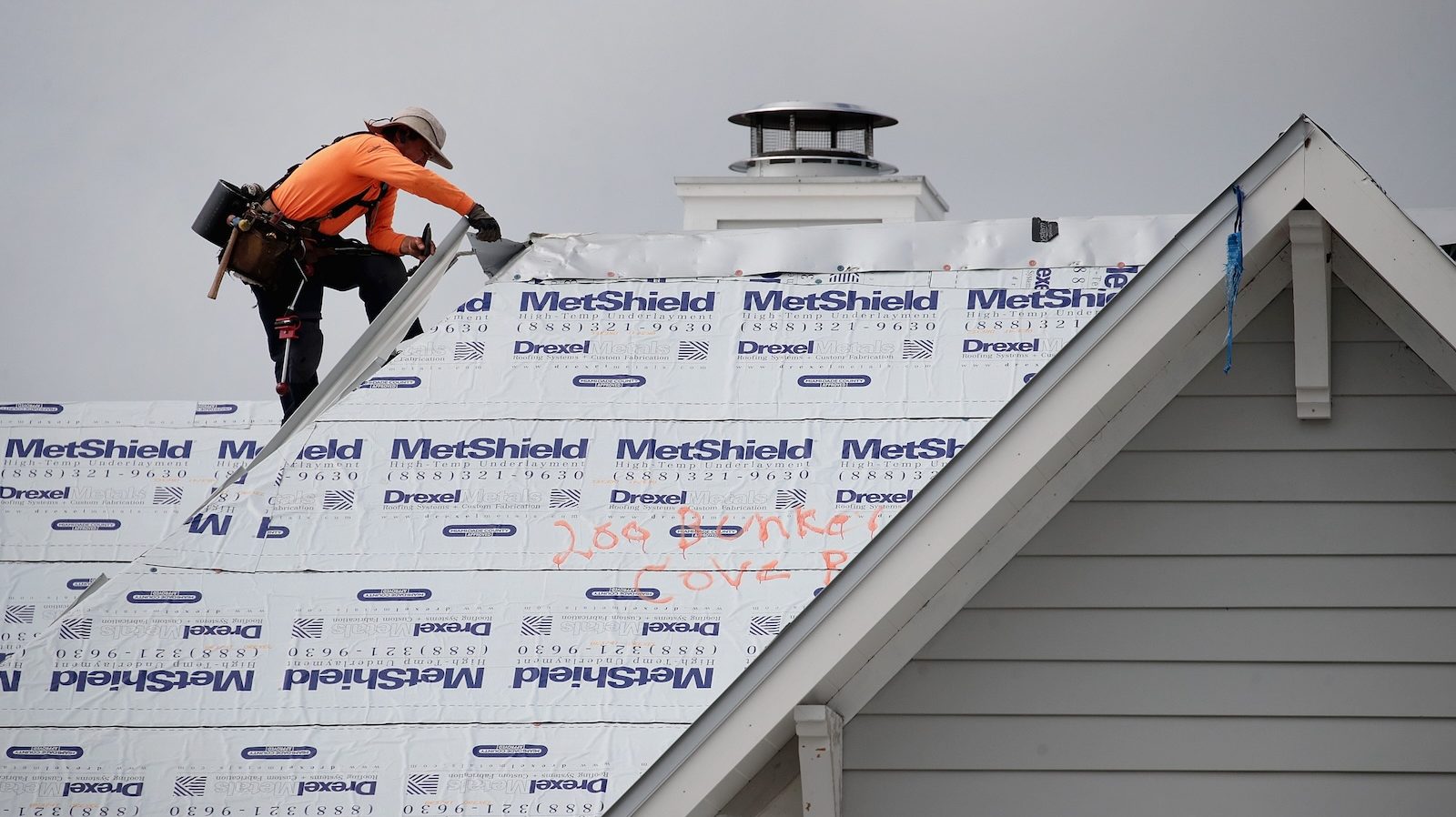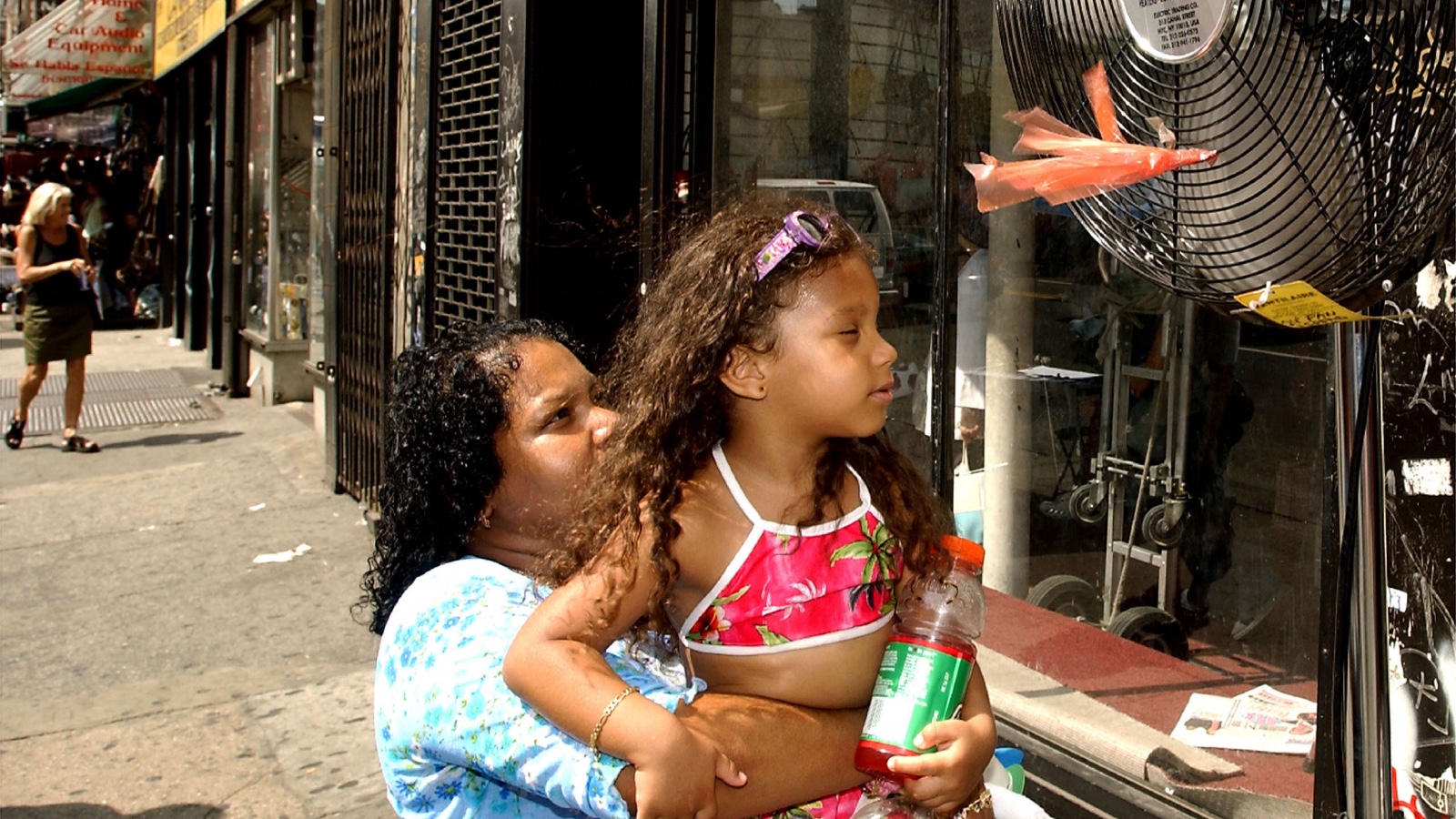The city is a growing paradox. Humanity needs its many efficiencies: people living more densely and taking up less land — with easy access to decarbonized public transportation — collaborating and innovating as urbanites have always done. But as the climate warms, city dwellers suffer extreme heat more than their rural counterparts as a result of what’s known as the urban heat island effect. All that concrete, asphalt, and brick absorbs the sun’s energy, accelerating urban temperatures well above those in the surrounding countryside.
In the United States, heat already kills more people than any other form of extreme weather, and nowhere is it more dangerous than in cities. So scientists and urban designers are now scrambling to research and deploy countermeasures, especially in the Southwest — not more energy-chugging air conditioning, but more passive, simple cooling techniques. “Cool roofs,” for instance, bounce the sun’s energy back into space using special coatings or reflective shingles. And urban green spaces full of plants cool the surrounding air.
“In the same way that the urban environment that we have built around us can exacerbate heat, it can also be modified to reduce that heat,” said Edith de Guzman, a researcher at UCLA and director of the Los Angeles Urban Cooling Collaborative. “If we also invested in increasing the reflectivity of existing materials in the built environment, we could reduce the number of ER visits and the number of deaths substantially, in some cases over 50 percent.”
While scientists have long known about the heat island effect, they’re getting more of the granular data they need to determine what interventions cities should invest in and where. Realizing the many benefits of greening cities with more vegetation at ground level, local governments have already been handing out incentives to plant more trees. But they could be doing much more to encourage the spread of cool roofs, which would make heat waves less dangerous.
New research suggests cities are ignoring the power of cool roofs at their own peril. A study in the journal Geophysical Research Letters earlier this month modeled how much cooler London would have been on the two hottest days in the extra-hot summer of 2018 if the city widely adopted cool roofs compared to other interventions, like green roofs, rooftop solar panels, and groundlevel vegetation. Though simple from an engineering standpoint, cool roofs turned out to be the most effective at bringing down temperatures.
“We considered it to be practicable everywhere,” said Oscar Brousse, a geographer who specializes in urban climatology at University College London and the study’s lead author. “Because in theory there is no reason — except heritage or protection by UNESCO or something like that — that would prevent you from doing it.”
Cool roofs have the luxury of scale: You can swap out basically any dark, heat-absorbing roof for one made of reflective materials, or simply paint the structure white. (Think about how much hotter you’d get on a 95-degree day wearing a black shirt than a white one.) Even clay roof tiles can be painted with light-colored coatings.

Putting them atop single-family homes is a bit trickier, given the proliferation of dark wooden shingles. “This is both about the industry getting locked into a specific type of roofing shingle and municipal building codes not pushing for anything better, despite a growing awareness of the importance of cool roofs,” said Vivek Shandas, who studies the urban heat island effect at Portland State University but wasn’t involved in the new study.
With the right policies and incentives, though, cities can encourage the adoption of more reflective shingles. In 2015, Los Angeles became the first major city to require that all new residential construction come with cool roofs by default. While a cool roof can cost the same or slightly more than a traditional one, the Los Angeles Department of Water and Power offers rebates for homeowners to make the switch. But until more municipal codes push the industry to switch to cool roofs, “the wide adoption will remain woefully inadequate for the scale of the challenge we face,” Shandas said.
One tricky thing about the heat island effect is that no two neighborhoods warm up the same way. Differences in geography, like proximity to lakes that provide cooling and hills that block winds, help determine how hot a given neighborhood already gets and how effective different interventions might be. Wealthier neighborhoods tend to be greener to begin with, whereas lower-income neighborhoods have often been deliberately zoned to host more industrial activities — lots of big buildings and concrete that soak up heat.
“Each neighborhood has its own unique signature of heat,” Shandas said. “We need to start from what’s on the ground and build from there, as opposed to taking, carte blanche, the entire city and throw a bunch of different interventions on it.”
While the new study found that widely deployed cool roofs could reduce temperatures across London by about 2 degrees Fahrenheit on average, in some places it’s by up to 3.6 degrees F. Both groundlevel vegetation and rooftop solar panels wouldn’t have that same sort of success: They’d lower temperatures in London by about half a degree F on average. Green roofs would decrease temperatures during the day, but then increase it again at night by releasing accumulated heat, so that, on average, the effects cancel each other out.
To be clear, this study was just looking at temperatures, not the many other benefits of efforts to cool cities down. A green roof, for instance, serves as a refuge for native plant and animal species. Green spaces on the ground can also prevent flooding if consciously designed to be absorbent. And greenery is just straight-up nice, boosting the mental health of residents.
While solar panels wouldn’t cool London as much as cool roofs, they could still provide a building with a host of climate-friendly benefits. Electricity from those panels could power ultra-efficient heat pumps, which provide warmth in the winter then reverse in the summer to act like air conditioners. “So even if you don’t decrease the temperature, you would have the means for decreasing it indoors and providing cool shelters,” Brousse said.
Deploying more air conditioners, however, would raise temperatures across London by 0.27 degrees F on average, but up to 1.8 degrees F in the dense city center. That’s because air conditioners cool a space by pumping indoor heat outdoors, essentially recycling heat across a metropolis.
The research suggests that the more passive cooling techniques that cities deploy, the less reliant they’ll be on air conditioning to provide indoor shelter for the vulnerable. And the better that scientists and urban designers can characterize heat in a given neighborhood, the better they’ll be able to collaborate with that community on solutions. “We should resist the urge to just find one way to do it,” said de Guzman of the Los Angeles Urban Cooling Collaborative. “From a scientific and heat mitigation standpoint, we need to have a combined approach.”





